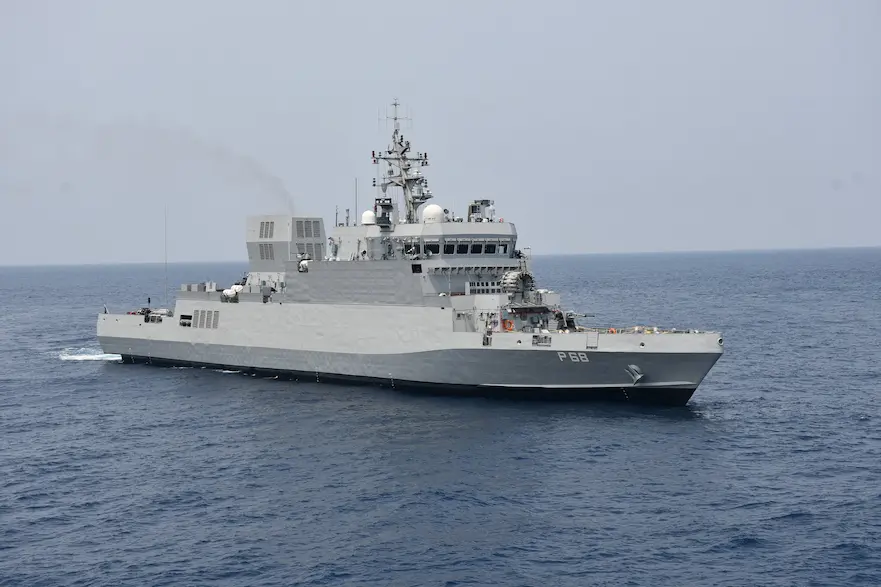
INS Arnala's induction marks a turning point in India’s maritime strength (photo-wikipedia)
Introduction: The Rise of India’s Coastal Vanguard
Submarine Killer INS Arnala – India’s naval might has taken a decisive leap with the commissioning of INS Arnala, the first warship under the Anti-Submarine Warfare Shallow Water Craft (ASW SWC) program. Designed for precision and agility in shallow waters, INS Arnala serves not just as a technological milestone but as a strategic deterrent against growing threats in the Indian Ocean region.
- Named after the historic Arnala Island, the ship revives maritime legacy with modern warfare capabilities.
- A symbol of self-reliance, built under the “Make in India” initiative by Garden Reach Shipbuilders & Engineers (GRSE).
- Equipped to protect India’s extensive coastline and counter stealth underwater threats particularly those from China’s expanding navy and Pakistan’s submarine fleet.
1: Anatomy of a Submarine Slayer
So what makes INS Arnala a standout in the anti-submarine warfare world?
- Size vs. Strength: Compact enough for shallow coastal zones, yet fierce in payload and detection systems.
- Sonar Suite: Packed with advanced sonar arrays that can detect low-noise submarines especially vital against Chinese Yuan-class and Pakistani Agosta-class subs.
- Electronic Warfare (EW) Capabilities: Equipped to jam, intercept, and counter hostile communication.
- Weapons System: Torpedoes, depth charges, and anti-submarine rockets offer a complete kill chain.
- Silent Operation: Low acoustic signature makes it ideal for surprise detection and engagement missions.
- Combat Management System (CMS) swiftly analyses sensor data and enables rapid-response targeting.
- Indigenous Radar Systems developed by DRDO enhance electronic countermeasures and surveillance.
- Manoeuvrability and speed allow for dynamic engagements in littoral zones, ensuring Indian naval forces maintain tactical control without heavy deployment.
This vessel isn’t meant to intimidate with size it’s meant to dominate through stealth, speed, and smart tech.
2: Strategic Ripples in Chinese Waters
China’s growing presence in the Indian Ocean has been a major security headache for New Delhi. With ports under the Belt & Road Initiative and surveillance ships lurking in proximity, India’s need for agile ASW units like Arnala has never been more urgent.
- Chinese spy vessels now have one more reason to steer clear.
- INS Arnala’s induction complements India’s existing anti-submarine fleet, forming layered defense against underwater incursions.
- The timing? Critical. With China flexing naval muscles, Arnala’s capabilities send a clear signal: India is watching, and ready.
This strategic shift isn’t aggressive, it’s assertive. A calculated response to preserve India’s interests in contested waters.
3: Pakistan’s Silent Panic
Pakistan’s naval strategy has long relied on stealth submarines to shadow Indian naval deployments. The introduction of Arnala changes the game.
- The Pakistani Navy’s Agosta-class submarines, which posed consistent threats, now face targeted tracking.
- INS Arnala limits the tactical freedom Pakistan enjoyed in shallow waters near Gujarat and Maharashtra.
- Combined with aerial surveillance, Arnala closes crucial blind spots in India’s undersea monitoring grid.
This isn’t just deterrence, it’s disruption. Pakistan now must rethink its submarine doctrine and deployment strategies.
4: Future Forward – A Blueprint for Coastal Dominance
Arnala is just the beginning. India plans to induct eleven more vessels under the ASW SWC program.
- Each craft expands India’s reach and reaffirms its commitment to littoral warfare excellence.
- These vessels will integrate seamlessly with naval command centers and drone-based reconnaissance systems.
- A shift towards modularity, AI-powered tracking, and unmanned companion vehicles is already underway.
INS Arnala may patrol the coast, but its ripple effects go far beyond. It’s a blueprint for maritime sovereignty and technological leapfrogging in military readiness.
- Integration with maritime patrol aircraft (MPA) and satellite imagery creates a unified situational awareness grid.
- The planned fleet of ASW SWCs will serve both peacetime surveillance and wartime strike readiness.
- Upcoming variants may include autonomous underwater vehicles (AUVs) and AI-assisted sonar signal interpretation, multiplying detection accuracy while reducing human workload.
Strategic analysts see this shift as India’s silent answer to hybrid maritime threats. By expanding naval capability in contested shallow waters, India is positioning itself as the proactive guardian of Indo-Pacific stability.
Stay updated with the latest news on Rapido Updates. Keep yourself updated with The World, India News, Entertainment, Market, Automobile, Gadgets, Sports, and many more
1 thought on “Submarine Killer INS Arnala Unleashed: India’s Fearsome Ignites Anxiety Across China and Pakistan”
Comments are closed.